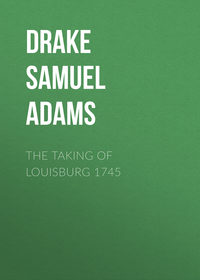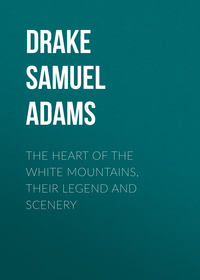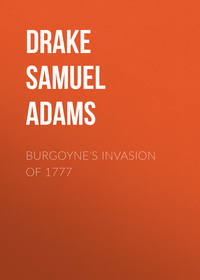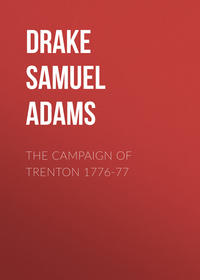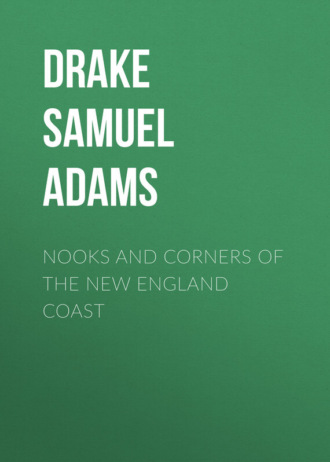 полная версия
полная версияNooks and Corners of the New England Coast

Samuel Adams Drake
Nooks and Corners of the New England Coast
CHAPTER I.
NEW ENGLAND OF THE ANCIENTS
"This is the forest primeval. The murmuring pines and the hemlocks,Bearded with moss, and with garments green, indistinct in the twilight,Stand like Druids of Old, with voices sad and prophetic,Stand like harpers hoar, with beards that rest on their bosoms.Loud from its rocky caverns the deep-voiced neighboring oceanSpeaks, and in accents disconsolate answers the wail of the forest."Longfellow.In many respects the sea-coast of Maine is the most remarkable of New England. It is serrated with craggy projections, studded with harbors, seamed with inlets. Broad bays conduct to rivers of great volume that annually bear her forests down to the sea. Her shores are barricaded with islands, and her waters teem with the abundance of the seas. Seen on the map, it is a splintered, jagged, forbidding sea-board; beheld with the eye in a kindly season, its tawny headlands, green archipelagos, and inviting harbors, infolding sites recalling the earlier efforts at European colonization, combine in a wondrous degree to win the admiration of the man of science, of letters, or of leisure.
Maine embraces within her limits the semi-fabulous Norumbega and Mavoshen of ancient writers. Some portion of her territory has been known at various times by the names of Acadia, New France, and New England. The arms of France and of England have alternately been erected on her soil, and the flags of at least four powerful states have claimed her subjection. The most numerous and warlike of the primitive New England nations were seated here. Traces of French occupation are remaining in the names of St. Croix, Mount Desert, Isle au Haut, and Castine, names which neither treaties nor national prejudice have been quite able to eradicate.
The name of Norumbega, or Norembegue, the earliest applied to New England, is attributed to the Portuguese and Spaniards. Jean Alfonse, the pilot of Roberval, the same person who is accredited with having been first to navigate the waters of Massachusetts Bay, gives them the credit of its discovery. It is true that Marc Lescarbot, the Parisian advocate whose relations are the foundations of so many others, was at the colony of Port Royal in the year 1606, with Pontgravé Champlain, and De Poutrincourt. This writer discredits all of Alfonse's statement in relation to the great river and coast of Norumbega, except that part of it in which he says the river had at its entrance many islands, banks, and rocks. In this fragment from the "Voyages Aventureux" of Alfonse, the embouchure of the river of Norumbega is placed in thirty degrees ("trente degrez") and the pilot states that from thence the coast turns to the west and west-north-west for more than two hundred and fifty leagues.1 The most casual reader will know how to value such a relation without reference to the sarcasm of Lescarbot, when he says, "And well may he call his voyages adventurous, not for himself, who was never in the hundredth part of the places which he describes (at least it is easy to conjecture so), but for those who might wish to follow the routes which he directs the mariner to follow." After this, his claim to be considered the first European navigator in Massachusetts Bay must be received with many grains of allowance.
Champlain, who remained in the country through the winter of 1605, on purpose to complete his map, has this to say of the river and city of Norumbega; he is writing of the Penobscot:
"I believe this river is that which several historians call Norumbegue, and which the greater part have written, is large and spacious, with many islands; and its entrance in forty-three and forty-three and a half; and others in forty-four, more or less, of latitude. As for the declination, I have neither read nor heard any one speak of it. They describe also a great and very populous city of natives, dexterous and skillful, having cotton cloth. I am satisfied that the major part of those who make mention of it have never seen it, and speak from the hearsay evidence of those who know no more than themselves. I can well believe that there are some who have seen the embouchure, for the reason that there are, in fact, many islands there, and that it lies in the latitude of forty-four degrees at its entrance, as they say; but that any have entered it is not credible; for they must have described it in quite another manner to have removed this doubt from many people." With this protest Champlain admits the country of Norumbega to a place on his map of 1612.
In the "Histoire Universelle des Indes Occidentales" printed at Douay in 1607, the author, after describing Virginia, speaks of Norumbega, its great river and beautiful city. The mouth of the river is fixed in the forty-fourth and the pretended city in the forty-fifth degree, which approximates closely enough to the actual latitude of the Penobscot. This authority adds, that it is not known whence the name originated, for the Indians called it Agguncia.2 It also refers to the island well situated for fishery at the mouth of the great river. On the map of Ortelius (1603) the two countries of Norumbega and Nova Francia occupy what is now Nova Scotia and New England respectively. The only features laid down in Nova Francia by name are "R. Grande Orsinora," "C. de Iaguas islas," and "Montagnes St. Jean." These localities answer reasonably well to as many conjectures as there are mountains, streams, and capes in New England; there is no projection of the coast corresponding with Cape Cod. Champlain names the River Penobscot, Pemetegoit. By this appellation, with some trivial change in orthography, it continued known to the French until its final repossession by the English.3
Turning to the "painful collections of Master Hakluyt," the old prebendary of Bristol, we find Mavoshen described as "a country lying to the north and by east of Virginia, between the degrees of 43 and 45, fortie leagues broad and fifty in length, lying in breadth east and west, and in length north and south. It is bordered on the east with a countrey, the people whereof they call Tarrantines, on the west with Epistoman, on the north with a very great wood, called Senaglecounc, and on the south with the mayne ocean sea and many islands." In all these relations there is something of fact, but much more that is too unsubstantial for the historian's acceptance. The voyages of the Norsemen, of De Rut, and Thevet are still a disputed and a barren field. I do not propose here to indulge in speculations respecting them.
Francis I. demanded, it is said, to be shown that clause in the will of Adam which disinherited him in the New World for the benefit of the Spaniards. Under his favor, the Florentine Verrazani put to sea from Dieppe, in Le Dauphine, in the year 1524.4 By virtue of his discoveries the French nation claimed all the territory now included in New England. The astute Francis followed up the clew by dispatching, in 1534, Jacques Cartier in La Grande Hermine. Despite the busy times in Europe, near the close of his reign, Henry IV. continued to favor projects confirming the footing obtained by his predecessors. Until 1614, when the name of New England first appeared on Smith's map, the French had the honor of adding about all that was known to the geography of its sea-board.
There can now be no harm in saying that Captain John Smith was not the first to give a Christian name to New England. The Florentine Verrazani called it, in 1524, New France, when he traversed the coasts from the thirty-fourth parallel to Newfoundland, or Prima Vista. Sebastian Cabot may have seen it before him; but this is only conjecture, though our great-grandfathers were willing to spill their blood rather than have it called New France. According to the "Modern Universal History," Cabot confessedly took formal possession of Newfoundland and Norumbega, whence he carried off three natives. In the "Theatre Universel d'Ortelius" there is a map of America, engraved in 1572, and very minute, in which all the countries north and south are entitled New France. "The English," says a French authority, "had as yet nothing in that country, and there is nothing set down on this map for them."
In Mercator's atlas of 1623 is a general map of America, which calls all the territory north and south of Canada New France. New England does not find a place on this map. Canada is down as a particular province. Virginia is also there.
Captain John Smith's map of New England of 1614 contains many singular features. In his "Description of New England," printed in 1616, the Indian names are given of all their coast settlements. Prince Charles, however, altered these to English names after the book was printed. The retention of some of them by the actual settlers might be accidental, but they appear much as if scattered at random over the paper. "Plimouth" is where it was located six years after the date of the map. York is called Boston, and Agamenticus "Snadoun Hill." Penobscot is called "Pembrock's Bay."
The name of Cape Breton is said to occur on very early maps, antecedent even to Cartier's voyage. A map of Henry II. is the oldest mentioned. "Nurembega" is on a map in "Le Receuil de Ramusius"5 tome iii., where there is an account of a Frenchman of Dieppe, and a map made before the discovery of "Jean Guartier." It is asserted that the Basque and Breton fishermen were on the coast of America before the Portuguese and Spaniards. Baron La Hontan says, "The seamen of French Biscay are known to be the most able and dexterous mariners that are in the world." It is pretty certain that Cape Breton had this name before the voyages of Cartier or Champlain. The Frenchman of Dieppe is supposed to be Thomas Aubert, whose discovery is assigned to the year 1508.
The atlas of Guillaume and John Blauw has a map of America in tome i. There is a second, entitled Nova Belgica and Nova Anglica. New England extends no farther than the Kennebec, where begins the territory of Nova Franciæ Pars, in which Norumbega is located. The rivers Pentagouet and Chouacouet (Saco) appear properly placed. The map bears certain marks in its nomenclature, and the configuration of the coast, of being compiled from those of Champlain and Smith.6
Researches made in England, France, and Holland, at the instance of Massachusetts and New York,7 have resulted in the recovery of many manuscript fragments more or less interesting, bearing upon the question of priority of discovery. Of these the following is not the least curious. If credence may be placed in the author of the "Memoires pour servir à l'Histoire de Dieppe," "Recherches sur les Voyages et decouvertes des Navigateurs Normands," and "Navigateurs Français," the continent of America was discovered by Captain Cousin in the year 1488. Sailing from Dieppe, he was carried westward by a gale, and drawn by currents to an unknown coast, where he saw the mouth of a large river.
Cousin's first officer was "un étranger nommé Pinçon ou Pinzon," who instigated the men to mutiny, and was so turbulent that, on the return of the caravel, Cousin charged him before the magistrates of Dieppe with mutiny, insubordination, and violence. He was banished from the city, and embarked four years afterward, say the Dieppois, with Christopher Columbus, to whom he had given information of the New World.8
In the "Bibliothéque Royale" of Paris there is, or rather was, existing a manuscript (dated in 1545) entitled "Cosmographie de Jean Alfonce le Xaintongeois." It is undoubtedly from this manuscript that Jean de Marnef and De St. Gelais compiled the "Voyages Aventureux d'Alfonce Xaintongeois," printed in 1559, which includes an expedition along the coast from Newfoundland southwardly to "une baye jusques par les 42 degrés, entre la Norembegue et la Fleuride," in 1543.
Of Jean Alfonse it is known that he was one of Roberval's pilots, in his voyage of 1542 to Canada, and that he returned home with Cartier. Roberval expected to find a north-west passage, and Jean Alfonse, who searched the coast for it, believed the land he saw to the southward to be part of the continent of Asia. His cruise within the latitude of Massachusetts Bay is also mentioned by Hakluyt. The claim of Alfonse to be the discoverer of Massachusetts Bay has been set forth with due prominence.9 Alfonse and Champlain were both from the same old province in the west of France.
It goes without dispute that the older French historians knew little or nothing of Hakluyt and Purchas. So little did the affairs of the New World engage their attention, that in the "History of France," by Father Daniel, printed at Amsterdam in 1720, by the Company of Jesuits, in six ponderous tomes, the discoveries and settlements in New France (Canada) occupy no more than a dozen lines. Cartier, Roberval, De Monts, and Champlain are mentioned, and that is all.
When a vessel of the old navigators was approaching the coast, the precaution was taken of sending sailors to the mast-head. These lookouts were relieved every two hours until night-fall, at which time, if the land was not yet in sight, they furled their sails so as to make little or no way during the night. It was a matter of emulation among the ship's company who should first discover the land, as the passengers usually presented the lucky one with some pistoles. One writer mentions that on board French vessels, after sighting Cape Race, the ceremony known among us as "crossing the line" was performed by the old salts on the green hands, without regard to season.
The method of taking possession of a new country is thus described in the old chronicles: Jacques Cartier erected a cross thirty feet high, on which was suspended a shield with the arms of France and the words "Vive le Roy." Sir Humphrey Gilbert, in 1583, raised a pillar at Newfoundland, with a plate of lead, having the queen's arms "graven thereon." A turf and a twig were presented to him, which he received with a hazel wand. The expression "by turf and twig," a symbol of actual possession of the soil and its products, is still to be met with in older New England records.
Douglass, the American historian, speaking of Henry IV., says, "He planted a colony in Canada which subsists to this day. May it not long subsist; it is a nuisance to our North American settlements: Delenda est Carthago."
The insignificant attempt of Gosnold, in 1603, and the disastrous one of Popham, in 1607, contributed little to the knowledge of New England. But the absence of any actual possession of the soil did not prevent the exercise of unworthy violence toward intruders on the territory claimed by the English crown. In 1613 Sir Samuel Argall broke up the French settlement begun at Mount Desert in that year, opening fire on the unsuspecting colonists before he gave himself the trouble of a formal summons. Those of other nations fared little better, as the following recital will show:
Purchas relates that "Sir Bernard Drake, a Devonshire knight, came to Newfoundland with a commission; and having divers good ships under his command, he took many Portugal ships, and brought them into England as prizes.
"Sir Bernard, as was said, having taken a Portugal ship, and brought her into one of our western ports, the seamen that were therein were sent to the prison adjoining the Castle of Exeter. At the next assizes held at the castle there, about the 27th of Queen Elizabeth, when the prisoners of the county were brought to be arraigned before Sergeant Flowerby, one of the judges appointed for this western circuit at that time, suddenly there arose such a noisome smell from the bar that a great number of people there present were therewith infected; whereof in a very short time after died the said judge, Sir John Chichester, Sir Arthur Bassett, and Sir Bernard Drake, knights, and justices of the peace there sitting on the bench; and eleven of the jury impaneled, the twelfth only escaping; with divers other persons."
Captain John Smith says: "The most northern part I was at was the Bay of Penobscot, which is east and west, north and south, more than ten leagues; but such were my occasions I was constrained to be satisfied of them I found in the bay, that the river ran far up into the land, and was well inhabited with many people; but they were from their habitations, either fishing among the isles, or hunting the lakes and woods for deer and beavers.
"The bay is full of great islands of one, two, six, eight, or ten miles in length, which divide it into many faire and excellent good harbours. On the east of it are the Tarrantines, their mortal enemies, where inhabit the French, as they report, that live with these people as one nation or family."
If the English had no special reason for self-gratulation in the quality of the emigrants first introduced into New England, the French have as little ground to value themselves. In order to people Acadia, De Monts begged permission of Henri Quatre to take the vagabonds that might be collected in the cities, or wandering at large through the country. The king acceded to the request.10
Again, in a memoir on the state of the French plantations, the following passage occurs: "The post of Pentagouet, being at the head of all Acadia on the side of Boston, appears to have been principally strengthened by the sending over of men and courtesans that his majesty would have emigrate there for the purpose of marrying, so that this portion of the colony may receive the accessions necessary to sustain it against its neighbors."11
These statements are supported by the testimony of the Baron La Hontan, who relates that, after the reorganization of the troops in Canada, "several ships were sent hither from France with a cargo of women of ordinary reputation, under the direction of some old stale nuns, who ranged them in three classes. The vestal virgins were heaped up (if I may so speak), one above another, in three different apartments, where the bridegrooms singled out their brides just as a butcher does ewes from among a flock of sheep. The sparks that wanted to be married made their addresses to the above-mentioned governesses, to whom they were obliged to give an account of their goods and estates before they were allowed to make their choice in the seraglio." After the selection was made, the marriage was concluded on the spot, in presence of a priest and a notary, the governor-general usually presenting the happy couple with some domestic animals with which to begin life anew.
When the number of historical precedents is taken into account, the superstition long current among mariners with regard to setting sail on Friday seems unaccountable. Columbus sailed from Spain on Friday, discovered land on Friday, and returned to Palos on Friday. Cabot discovered the American continent on Friday. Gosnold sailed from England on Friday, made land on Friday, and came to anchor on Friday at Exmouth. These coincidences might, it would seem, dispel, with American mariners at least, something of the dread with which a voyage begun on that day has long been regarded.
CHAPTER II.
MOUNT DESERT ISLAND
"There, gloomily against the sky,The Dark Isles rear their summits high;And Desert Rock, abrupt and bare,Lifts its gray turrets in the air."Whittier.Islands possess, of themselves, a magnetism not vouchsafed to any spot of the main-land. In cutting loose from the continent a feeling of freedom is at once experienced that comes spontaneously, and abides no longer than you remain an islander. You are conscious, in again setting foot on the main shore, of a change, which no analysis, however subtle, will settle altogether to your liking. Upon islands the majesty and power of the ocean come home to you, as in multiplying itself it pervades every fibre of your consciousness, gaining in vastness as you grow in knowledge of it. On islands it is always present – always roaring at your feet, or moaning at your back.
Islands have had no little share in the world's doings. Corsica, Elba, and St. Helena are linked together by an unbroken historical chain. Homer and the isles of Greece, Capri and Tiberius loom in the twilight of antiquity. Thinking on Garibaldi or Victor Hugo, the mind instinctively lodges on Caprera or Guernsey. An island was the death of Philip II., and the ruin of Napoleon. In the New World, Santo Domingo, Cuba, and Newfoundland were first visited by Europeans.
The islands of the New England coast have become beacons of her history. Mount Desert, Monhegan, and the Isles of Shoals, Clark's Island, Nantucket, The Vineyard, and Rhode Island have havens where the historian or antiquary must put in before landing on broader ground. I might name a score of others of lesser note; these are planets in our watery system. On this line many peaceful summer campaigns have been brought to a happy conclusion. Not a few have described the more genial aspects of Mount Desert. It has in fact given employment to many busy pens and famous pencils. I am not aware that its wintry guise has been portrayed on paper or on canvas. The very name is instinctively associated with an idea of desolateness:
"The gray and thunder-smitten pile
Which marks afar the Desert Isle."
Champlain was no doubt impressed by the sight of its craggy summits, stripped of trees, basking their scarred and splintered steeps in a September sun. "I have called it," he says, "the Isle of Monts Déserts."
In a little "pattache" of only seventeen or eighteen tons burden, he had set out on the 2d of September, 1604, from St. Croix, to explore the coast of Norumbega. Two natives accompanied him as guides. The same day, as they passed close to an island four or five leagues long, their bark struck a hardly submerged rock, which tore a hole near the keel. They either sailed around the island, or explored it by land, as the strait between it and the main-land is described as being not more than a hundred paces in breadth. "The land," continues the French voyager, "is very high, intersected by passes, appearing from the sea like seven or eight mountains ranged near each other. The summits of the greater part of these are bare of trees, because they are nothing but rocks." It was during this voyage, and with equal pertinence, Champlain named Isle au Haut.12 According to Père Biard, the savages called the island of Mount Desert "Pemetiq" "meaning," says M. l'Abbé Maurault, "that which is at the head." A crowned head it appears, seen on land or sea.
It is curious to observe how the embouchure of the Penobscot is on either shore guarded by two such solitary ranges of mountains as the Camden and Mount Desert groups. They embrace about the same number of individual peaks, and approximate nearly enough in altitude. From Camden we may skirt the shores for a hundred and fifty miles to the west and south before meeting with another eminence; and then it is an isolated hill standing almost upon the line of division between Maine and New Hampshire that is encountered. On the shore of the main-land, west of Mount Desert, is Blue Hill, another lone mountain. Katahdin is still another astray, of grander proportions, it is true, but belonging to this family of lost mountains. Although they appear a continuous chain when massed by distance, the Mount Desert range is, in reality, broken into little family groups, as exhibited on the map.
Another peculiarity of the Mount Desert chain is that the eastern summits are the highest, terminating generally in precipitous and inaccessible cliffs. I asked a village ancient his idea of the origin of these mountains, and received it in two words, "Hove up." The cluster numbers thirteen eminences, to which the title "Old Thirteen" may be more fitly applied than to any political community of modern history. This assemblage of hills with lakes in their laps at once recalled the Adirondack region, with some needful deductions for the height and nakedness of the former when compared with the greater altitudes and grand old forests of the wilderness of northern New York.
Should any adventurous spirit, after reading these pages, wish to see the Desert Isle in all its rugged grandeur, he may do so at the cost of some trifling inconveniences that do not fall to the lot of the summer tourist. In this case, Bangor or Bucksport will be the point of departure for a journey of from thirty to forty miles by stage. I came to the island by steamboat from Boston, which landed me at Bucksport; whence I made my way via Ellsworth to Somesville.





